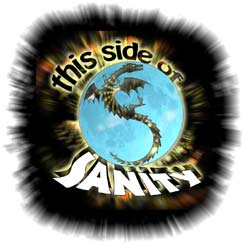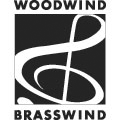
Introduction to Music
Musical Theory and Technique
This Side of Sanity
for music majors
Music majors should expect multiple classes working through the material. Some material, even large sections, may be skipped. Some material may be presented in an order different than the order here. Almost everything covered in this chapter is covered again in later chapters in a more advanced version.
The goal of a music major typically is to become a professional musician. There are a minority of music majors who are serious fans of music (usually more sophisticated genres such as blue grass, classical, or jazz) who simply want to appreciate music at a deeper level (and an introductory class for non-music majors might be a better choice).
Some of the careers in music include:
- “cover” band
- tribute band
- original music
- orchestra, chorus, or other large group
- studio recording
- musical theatre
- band leader
- backing vocals
- dancer
- choreographer
- composer/lyricist
Some of the careers in fields related to music include:
- producer
- recording engineer
- A&R representative
- concert sound-person
- concert roadie
- lighting and special effects
- music videography (including directing and editting)
- music teacher (either generalized or specific instruments, such as guitar or piano)
- music store salesperson (often combined with teaching music)
- college or university professor
- radio, television, or other broadcasting
- web site design
- photography
- illustration or painting
for non-music majors
Students in introductory classes for non-music majors meeting fine arts requirements will be very unlikely to be assigned any materials past triads (maybe also the beginning of seventh chords) and may be instructed to skip over some of the more difficult materials in the opening chapters.
Different instructors will emphasize different things. You will not be using the vast majority of this book, but you may find it interesting to look at some of the materials that aren’t covered in your class.
introduction to music
Music is easy to recognize but difficult to define. Dennis Anderson, avant garde composer and Beatles historian, defines music as “organized sounds”.
Music is made up of three basic elements: rhythm, melody, and harmony.
Rhythm is the spacing of sounds and silences over time. Rhythm is the only one of the three basic parts of music that can stand on its own.
Every rhythm has a beat. The beat is the predominant recurring pulse of the music. Most people dance to the beat (or at least try to).
The beat can be divided into subdivisions. These subdivisions are used to create a rhythm pattern. In popular music the rhythm pattern creates a groove.
Your instructor may peform some simple rhythms for you or lead the class in clapping out some simple rhythms.
Melody is a single line or series of notes. In popular songs, this is the part that the lead singer sings.
Your instructor may peform some simple melodies for you or lead the class in singing some simple melodies.
Harmony is more than one note played at the same time.
Three or more notes played together in harmony can create chords. These are the accompaniments strummed by a guitar player.
Harmony can also be created by having multiple voices (single lines) played together. This approach is typical of serious music, often known as “classical music”, and the barbershop quartet. Choruses are divided into four groups to create four-part harmonies.
Your instructor may peform some simple harmonies for you or divide the class into groups to sing some simple harmonies.




.gif)








